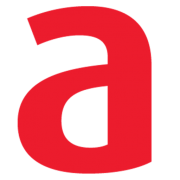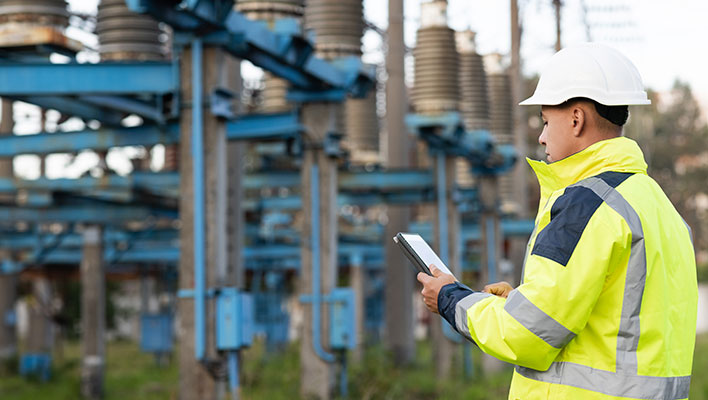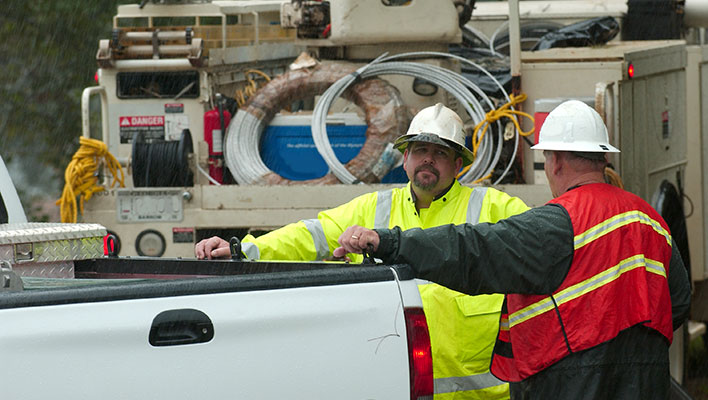The amount of data available to organizations is staggering. With process digitalization and a push for a final step away from paper and spreadsheets into software-based resource and work management, insights are pouring in as to how operations can run more efficiently and cost effectively. However, analyzing the gold mine of data is a challenge on its own. How can this data be evaluated quickly to predict future trends and provide a heightened assessment of how to move business forward in upcoming years or during a current event?
The Future is Now
Predictive Analytics and Artificial Intelligence are two ways utilities and critical infrastructure organizations can use to translate all the incoming data points and turn them into usable lessons and actable process change. Both are decades old computer-world processes that have finally found a place in today’s complex business environment.
Predictive Analytics is the use of data, machine learning techniques, and analytical algorithms to identify possible outcomes of future work and resource management needs based on stored historical data.
Artificial Intelligence are computer systems that can perform tasks that normally require human intelligence and move forward independently with solutions based on the empirical data it gathered from the same historical sources.
The benefits of both are two-fold – they reduce cost and improve efficiency by going beyond what has already happened so a best assessment scenario of what will happen can inform future planning, budgets, and work assignments.
ARCOS is invested in the future of Predictive Analytics and Artificial Intelligence and is currently researching and developing ways that our solutions can use AI to enhance customer operations.
The Difference Between Automation and Artificial Intelligence
ARCOS already provides automated workforce solutions that improve operational efficiency and our utility partners’ bottom line. Solutions like Callout, Crew Manager and Mobile Workbench are proven tools that have made a notable difference in how organizations approach their work and resource management. What ARCOS is working on now takes the historical data from these automated processes and puts it to use. But let’s back up a bit. What exactly is “automation” and why isn’t it considered “artificial intelligence”?
Automation performs repetitive, monotonous tasks. Its only job is to move things through a cycle. Think of automation as one variable problem-solving. If this happens, then this happens. It is a pre-programmed routine with a fixed outcome.
Artificial Intelligence is machine learning that mimics what humans do. It is where machines can make decisions to move something forward without having the problem already programmed in. Think of AI as multiple variable problem-solving with the benefit of learning and without having human intervention. Based on the hard data, the AI makes its own decisions as to next steps or reveals trends and chooses paths that bring advanced awareness and increased efficiency into play.
Use Cases in Development
In our efforts to expand cost savings and efficiency, ARCOS’s first use case was a test of Asset Anomaly Detection. We loaded photos into our AI model and trained it to distinguish between working and correct assets verses those with problems or needing repair. The AI was able to detect that a transformer needed replaced, a pole was broken, or another item was defective and kicked-off a series of automated actions to correct the anomaly without the need of a human overseeing the process. Work and inventory acquisition orders were automatically triggered and sent through ARCOS Mobile Workbench which sped up the restoration and repair process based on the AI’s deduction and in-depth self-super-sleuthing capabilities.
Our second use case was used to predict ARCOS Callout response. The same AI training took place in this scenario, however, instead of pictures, we fed the machine Callout data. The data included users’ names, historical dates, accepted job rates, times of previous callouts and more. The AI was able to provide a prediction of callout use and user response which helped augment the utility’s manager’s ability to make quick, better decisions and learn the internal user trends of their crews. The machine learning gave the operator the ability to know if they needed to add more people to a callout to cut down on the time it took to form a crew, which ultimately enabled them to get their resources faster.
Again, both of the above ARCOS AI examples are in the research and development phase, but once tested and proven further, will deliver additional efficiencies to our solutions and help make decisions faster for our customers.
Our AI Does the Thinking for You
ARCOS continues to innovate while keeping a discerning eye on integrating advanced technology to our systems. Real-world solutions – like Predictive Analytics and Artificial Intelligence – are on their way that will improve efficiency and keep costs low for our utility partners. We would be glad to share our future Roadmap with you. Contact us and let’s talk.




